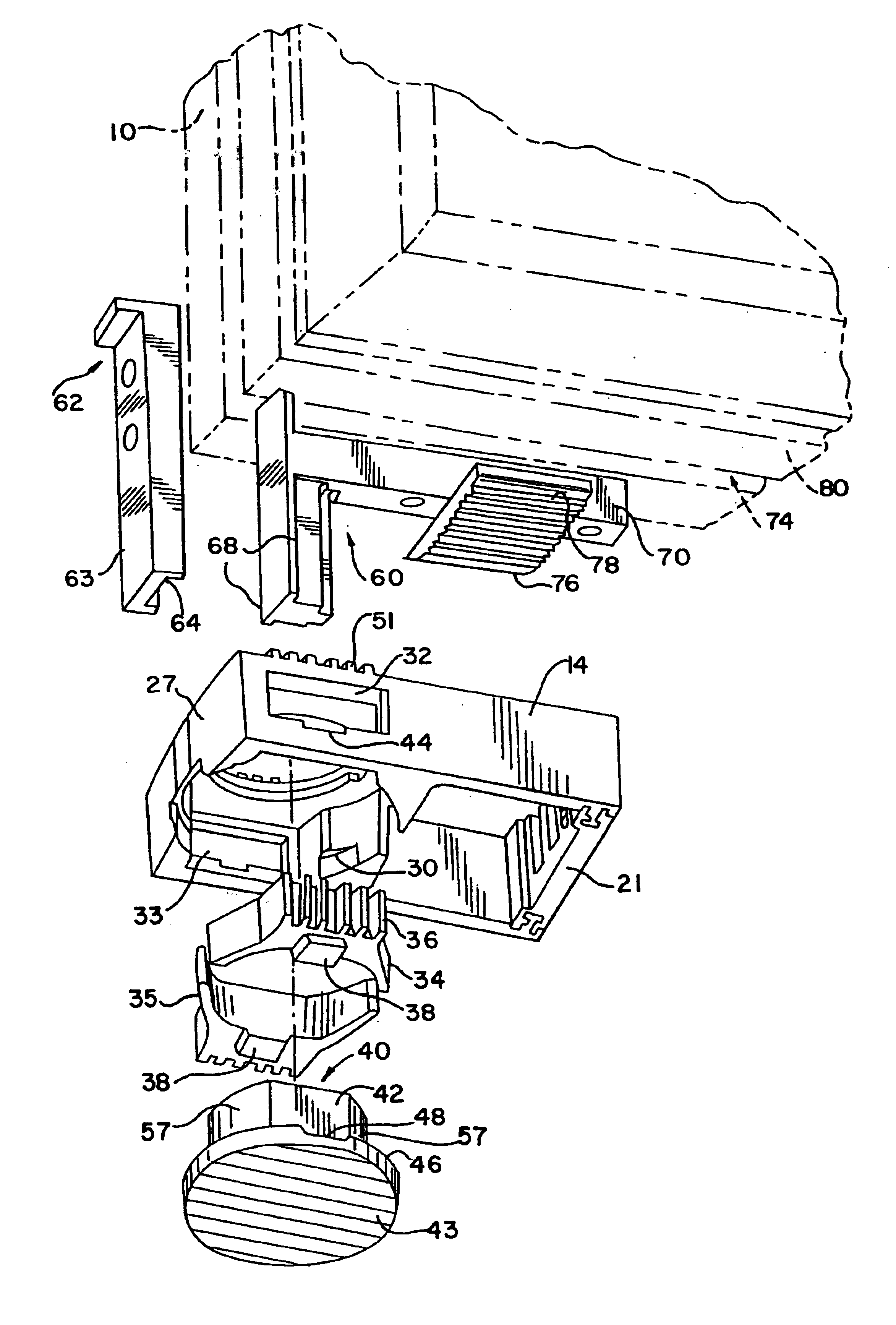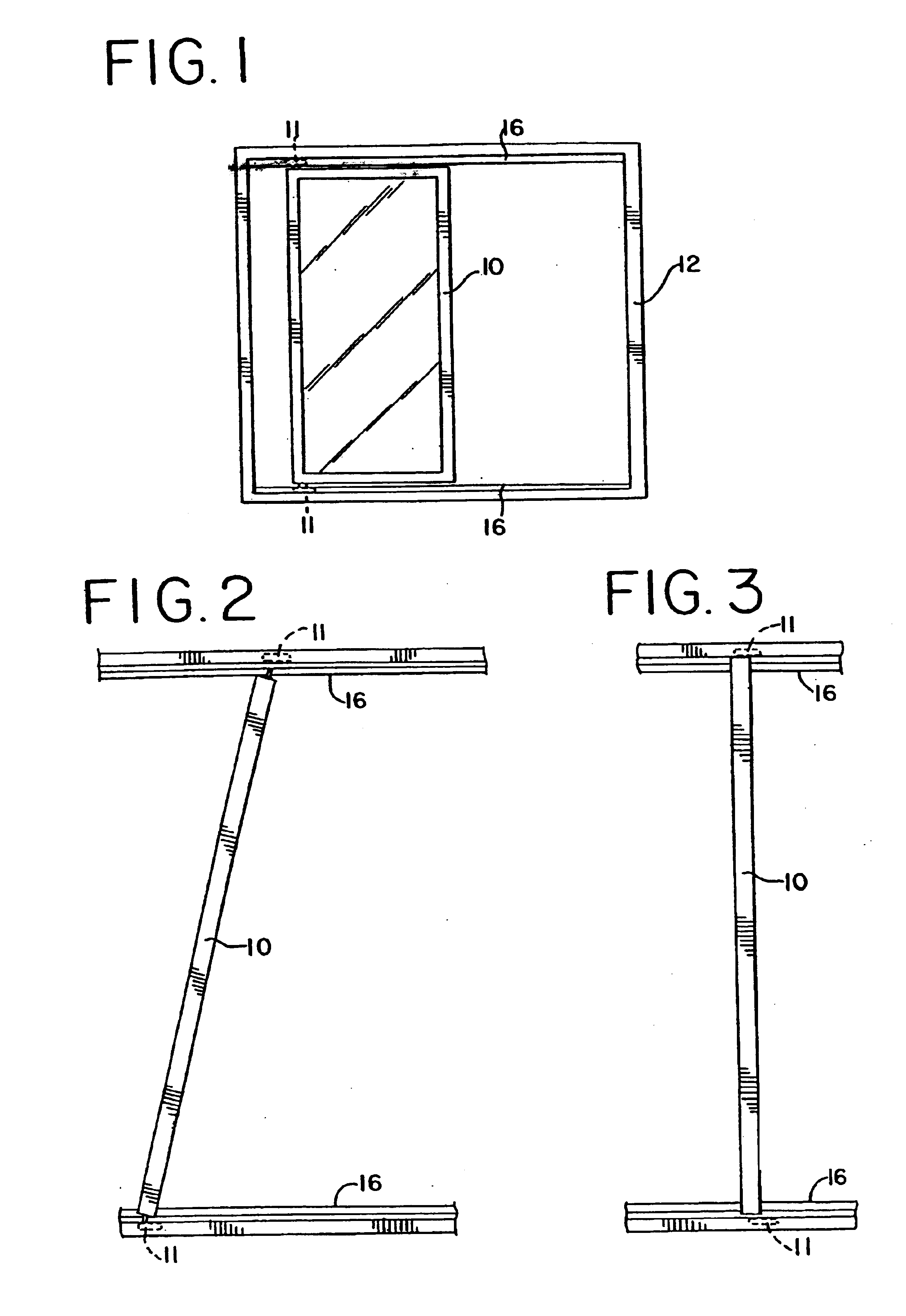Brake shoe for sash window or door assembly
a technology for sash windows and doors, applied in the direction of door/window fittings, construction fastening devices, construction, etc., can solve the problem that the pivot arrangement of this type may not develop adequate arresting strength and reliability
- Summary
- Abstract
- Description
- Claims
- Application Information
AI Technical Summary
Benefits of technology
Problems solved by technology
Method used
Image
Examples
second embodiment
[0055]A second preferred embodiment of the present invention is depicted in FIGS. 20-26. Elements of this second embodiment that are similar in structure and function to corresponding elements of the first described embodiment will be referred to with identical reference numerals.
[0056]In this second preferred embodiment, the brake shoe assembly 11 utilizes an integral brake shoe element. The radial or lateral brake members 34 are connected by a first, upper resiliently flexible member 239 and a second, or lower resiliently flexible member 241. The integral brake element consisting of brake members 34,35 and flexible members 239,241 is mounted in the slider body 14 such that the brake members 34 are slidably located in the side openings 32,33 and such that the flexible members 239,241 are located within the central opening 28. The cam mechanism 40 is mounted within the central opening 28 such that the flexible members 239 generally surround the cam mechanism 40.
[0057]In operation, t...
third embodiment
[0061]The freely-slidable window position of the third embodiment is defined as that position wherein the cam flats 42 abut the flat portions 47 of brake members 34,35, depressions 340 receive the cam radial protuberances 341 and cam flange recesses 48 receive brake member protrusions 38. As shown in FIG. 28, when the cam is rotated as previously described, the cam radial protuberances 341 leave the depressions 340 and engage the flat surfaces 47 of the brake members 34,35 to bias the brake members 34,35 for radial movement, thus resulting in frictional engagement of frictional ribbed surfaces 36 with opposed side walls 20 of track 16. Upon further cam 40 rotation, circular portions 57 of cam 40 engage the flat portions 47 of brake members 34,35 thereby continuing to bias the brake members 34,35 for additional and greater frictional engagement of ribbed surfaces 36 with opposed side walls 20 of track 16. Substantially simultaneous with this radial biasing of brake members 34,35, rot...
PUM
 Login to View More
Login to View More Abstract
Description
Claims
Application Information
 Login to View More
Login to View More - R&D
- Intellectual Property
- Life Sciences
- Materials
- Tech Scout
- Unparalleled Data Quality
- Higher Quality Content
- 60% Fewer Hallucinations
Browse by: Latest US Patents, China's latest patents, Technical Efficacy Thesaurus, Application Domain, Technology Topic, Popular Technical Reports.
© 2025 PatSnap. All rights reserved.Legal|Privacy policy|Modern Slavery Act Transparency Statement|Sitemap|About US| Contact US: help@patsnap.com



